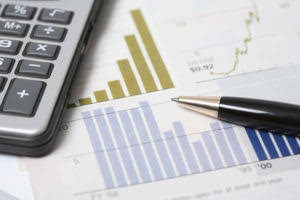
This allows organizations to have greater control over their cost calculations and ensures they do not deviate from standard accepted practices. Additionally, specialized costing software can allow for better integration with other financial systems, giving organizations a more comprehensive view of their accounts. This gives managers a benchmark against which they can evaluate their expenses and assess areas where savings may be possible.
- Any variances thatresult when practical standards are used indicate abnormal orunusual problems.
- Both budgets and standard costs make it possible to prepare reports which compare actual costs and predetermined costs for management.
- Recall that we apply the overhead costs to the aprons by using the standard amount of direct labor hours.
- The system once served a valuable purpose, and the cost for providing reasonable cost and profitability estimates was decent in a world of limited alternatives.
Examples of Standard Cost of Materials and Price Variance
You must also identify how frequently standards should be created and guarantee continual analysis is performed to gain the much-needed variances. This generally entails daily tracking of actual expenses and putting them in the system. Using standard cost information can also help businesses track their progress toward meeting their financial goals and identify areas where they may need to improve. Overall, the purpose Bakery Accounting of standard cost is to provide organizations with a valuable tool for managing their finances and improving their bottom line. Firms evaluate management’s andworkers’ performances through the use of a budget. Is your manufacturing operation using Standard Cost or Actual Cost to value production costs?
Recommended Reading: Standard Costing- What Is It, Why It Matters-

Assume, for example, that in a production center, actual direct materials costs of $ 52,015 exceeded standard costs by $ 6,015. Knowing that actual direct materials costs exceeded standard costs by $ 6,015 is more useful than merely knowing the actual direct materials costs amounted to $ 52,015. Now the firm can investigate the cause of the excess of actual costs over standard costs and take action. Assume, for example, that in aproduction center, actual direct materials costs of $ 52,015exceeded standard costs by $ 6,015.
Understanding Issued Shares: Types, Processes, and Financial Impact
Companies may use actual costs instead of standard costs to make production decisions in these cases. However, there are some situations where standard cost may not be the best option, such as when there is high demand for a product and companies need to quickly produce as much as possible. A standard cost is an accounting tool that records and tracks the costs of producing a product or service. Pricing decisions are based on various factors, including market conditions, competitive landscape, and company objectives. A budget estimates the amount of money spent over a predetermined period and is typically maintained with the help of accounting software.
What is the relationships between robust processes, accurate data, and standard costing?

We will pursue the interdependence of variances in the following examples.


The percentages are next compared with those of the previous periods to establish the trend of actual and current standard from basic cost. In other words, a business may not revise standards to keep pace with the frequent changes in manufacturing conditions. Standard costing is expensive and unsuitable for job manufacturing industries as they manufacture non standardized products such as catering, tailoring, printing, etc.
- Standard cost can help decision-makers compare the relative costs of different options and choose the option that is most likely to minimize total costs.
- Any difference between the standard and actual costs is called a variance.
- This step is particularly important for companies operating in highly competitive industries, where cost efficiency can be a significant differentiator.
- It needs no special calculations to determine actual unit costs during the period.
- Inventory valuation is easier to understand with a standard cost system than an actual cost system.
- Lastly, tracking and controlling costs can be challenging if the standard costs are inaccurate.
Examples include sales price variance, sales quantity (or volume) variance, and sales mix variance. A difference in the relative proportion of sales can account for normal balance some of the difference in a company’s profits. For example, workers may put on a crash effort to increase output at the end of the month to avoid an unfavorable labor efficiency variance. Most of these problems result from improper use of standard costs and the management by exception principle or from using standard costs in situations in which they are not appropriate.
- Some argue that standard cost is more accurate, as it considers all the factors that go into producing a product.
- Under an actual cost system, unit costs for batches of identical products may differ widely.
- You should also consult an accountant or financial advisor to ensure you use the most accurate methods possible.
- A standard cost is also referred to as the “should be,” a predetermined cost, an estimated future cost, an expected cost, a budgeted unit cost, or an anticipated cost.
- Standard costing is fated to disappear into history like many other tools and techniques that were once useful but have now been replaced by something better (and less expensive!).
- Faulty standard cost calculations can have serious implications for a business.
It bases on the average between the highest and lowest production over the cycle. Some valuable items that cannot be measured and expressed in dollars include the company’s outstanding reputation, its customer base, the value of successful consumer brands, and its management team. As a result these items are not reported among the assets appearing on the balance sheet. The balance sheet reports the assets, liabilities, and owner’s (stockholders’) equity at a specific point in time, such as December 31.
Standard Costing System

Multiple standard costs can provide businesses with greater insight into the true cost structure of a product, as well as the potential to leverage cost savings between products. Additionally, multiple standard costs can also be used to identify materials or labor usage discrepancies and support decision-making during budgeting processes. However, standard costs can also be based on other factors, such standard cost systems as external market conditions or changes in production processes. With standard costs thus playing such an essential role in guiding business decisions, companies must carefully consider their methods for determining these standard costs.